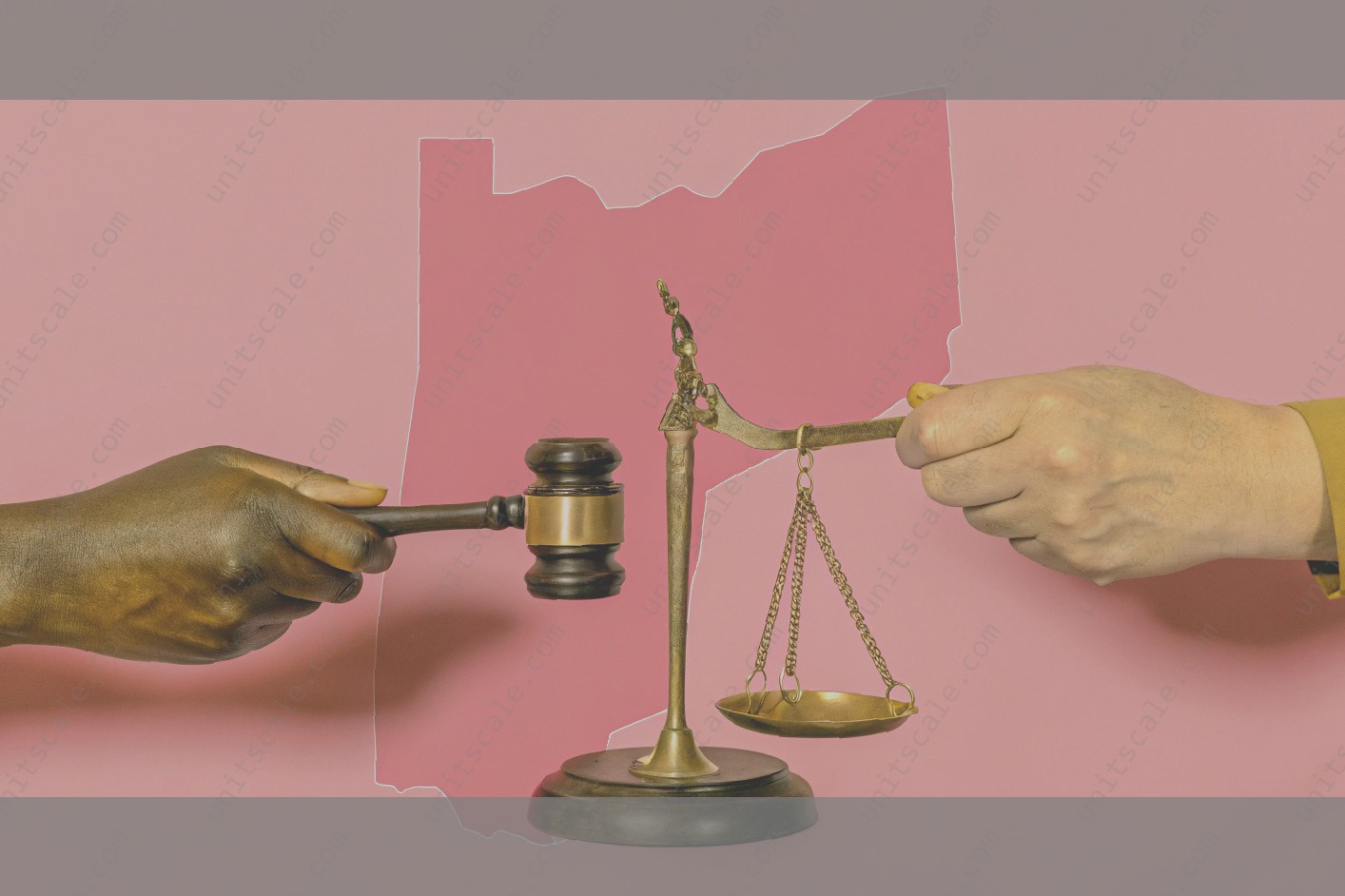Legally Binding Lease Agreements in Ohio
Lease agreements in Ohio are agreements under which a tenant will pay rent to a landlord for the right to occupy property. While many leases can be oral, under Ohio law, these leases must be in writing for a lease period greater than one period. A "period" is stabilized at one week or one month. As a result, a lease that is only for a week-to-week or month-to-month term, can be oral. All leases that are longer than this must be in writing. Because leases are a contract, specific rights and obligations arise. These rights and obligations can vary greatly based on the terms of the lease, any state or federal laws, and any ordinances or rules that may be in the area by either a tenant or landlord .
Among other things, understanding the lease agreement is important. The typical lease agreement will contain information about the landlord and tenant’s obligations, conditions for early termination, things that a tenant can and cannot do in the rental property, and the process for the tenant giving notice to the landlord if there are any issues or complaints. Understanding the terms, as well as the legal consequences of breaching those terms, can make or break a deal when a tenant must move out early. Being in Ohio, a tenant should also understand their rights under the Ohio Revised Code. There are a number of complicated rules that can make or break a deal for a tenant or landlord. Knowing your rights is important to ensuring a smooth tenancy.
When Leases Can Be Legally Broken in Ohio
Ohio law does provide certain legally permissible reasons for breaking a lease:
The active military duty exclusion – Under federal law, if you enter active military service while you possess or obtain an interest in housing, you can terminate your lease upon delivery of a written notice to your landlord with a copy of your military orders. In addition to the federal law, most states have follow-on statutes which further allow service members with an active military order to terminate a housing lease that is for a period of time greater than 30 days. For example, Ohio Revised Code Section 5923.07, "While entering military service, lessee may terminate lease," states: A person in the active military service of the country, whether a resident or nonresident of this state, may terminate a lease or rental agreement of residential premises in this state entered into by the person as lessee or renter for a period of time greater than thirty days, by delivering written notice in person or by mail … to the landlord … A person terminating such a lease or rental agreement shall not be liable for any rent accruing after the date of termination.
The uninhabitable living conditions exclusion – If you are renting from a landlord that continually fails to keep the premises maintained in a habitable condition, you may have a right to break your lease. For example, if you find yourself living in a place with mold and broken windows that is not safe for human habitation, it may be possible to legally terminate your lease. But we would advise seeking the counsel of an attorney in your area before moving forward with this option because it can be complicated.
The landlord harassment exclusion – If your landlord steals your money or threatens you, it could be legal grounds for terminating your lease. As with the uninhabitable living conditions exclusion, this should be approached with caution and is best handled with the assistance of a lawyer.
Legal Procedure to Break a Lease
The process for legally breaking a lease begins with a tenant providing their landlord, in writing, notice of intent to vacate the rental property. A tenant’s lease should describe how much notice is required to terminate the lease and the timeframe from which the termination occurs.
Tenants that break their lease in Ohio, even with legal grounds to do so, must consider that their failure to comply with the specific terms of the lease may require them to remain as the legal tenant until the property is re-rented or until the lease term expires. Tenants should review the lease to determine whether there is an early termination clause.
To enforce a lease provision providing for an early termination, a tenant must give their landlord notice of intent to vacate. This notice must be in writing, and the tenant should keep a copy for their records. If the tenant fails to provide notice, they could be held responsible for the cost of re-renting the property.
In order to avoid disputes about the date on which the lease terminates, the tenant must provide sufficient notice. How much notice a tenant is required to provide depends on the specific circumstances of their lease and whether the landlord is subject to legal protections for low-income tenants in Ohio. For example, a landlord who receives government funds might be required to give a tenant 30 days’ notice of termination instead of the standard three days’ notice.
If a tenant has a ground to terminate the lease under Ohio law, they must document each compliant with their obligation to pay rent and provide the landlord with written notice of their intent to terminate the lease under Ohio law. The tenant should provide any documentation of problems experienced at the rental property, including photographs of the damage, correspondence with the landlord about the issue, and documentation of the landlord’s failure to remedy the issue. Upon receiving this written notice, the landlord must make a plan to remedy the problem and address the issue within a reasonable timeframe.
In some situations, the tenant can prove their compliance with the lease by making the required payments. However, as a general rule, a tenant should not attempt to document their complaint through compensation required by the lease. For example, if the lease requires a certain payment for a late rent payment, the tenant would not have satisfied their lease by compensating the landlord for the late fee. Tenants should carefully document their compliance with their payment obligations under the lease as well. If they have a legal right to compensate their landlord for their noncompliance, they will want to take steps to collect the payment they have stored up for the issue. If they do not, they may lose the right to collect.
As discussed thoroughly since with a ground to terminate the lease, the tenant must follow the process for filing a formal complaint with the landlord. Upon receiving the tenant’s notice, the landlord has a legal duty to address the issue. A tenant would be wise to document their efforts to provide the landlord with the opportunity to address the problem.
Whether or not the tenant has a ground to terminate the lease under Ohio law, they should consider their rights under Ohio law to assign the lease. Tenants could consider moving out of the rental property while simultaneously transferring their tenancy to someone else. This option might benefit a tenant facing job loss, family troubles, or other issues requiring them to relocate.
Consequences of Breaking a Lease
Even if you don’t have any legal justification for breaking a lease, you might still have to pay some of the rent that would be due for the remainder of the lease term. For example, you might have to pay the landlord’s efforts to re-rent the property. Alternatively, your landlord might hold you liable for the full rents due for the remainder of the lease term, depending on the terms of the lease. This amount of the potential liability has to be determined by the contract between you and your landlord. If you were to break your lease, your landlord would have a duty to minimize his damages. In other words, your landlord shouldn’t have to lose more than what he is out of pocket as a result of your breaking the lease.
In Ohio, a landlord can go ahead and mitigate damages any way they choose. Say, for instance, you move out and your lease is up on December 31st. Your landlord has the right to start looking to fill that space on January 1st or even start advertising it in mid-December, depending on the circumstances. But realistically , your landlord won’t rent out that space until he has to.
A common method of trying to mitigate damages is for your landlord to try to re-rent the space to a different tenant. If they are able to re-rent the space, then they will generally cut you a check for the amount of rent you still owe under your lease up until when they are able to re-rent the unit to someone else. However, they are not required to do that, meaning they can decide not to re-rent the space and hold you accountable for the full amount of rent the property would have generated in that period. It is best to clarify exactly how your landlord will go about mitigating damages in your lease so there will be no misunderstandings.
Suppose your landlord is able to mitigate his damages and re-rent the space to another tenant for the remainder of your lease term. In this situation, you should be cut off from liability for the remainder of the lease term, or at least the amount your landlord was able to re-rent the property for. In other words, if your lease had six months remaining at $800 per month, and your landlord was able to find a replacement tenant to sign a new lease with a rent price of $600 per month, you should only be responsible for the difference in that rent price.
Hiring an Attorney
When it comes to breaking a lease in Ohio, the process can be complex and fraught with potential pitfalls. For this reason, seeking the assistance of a legal professional is often critical. Not only can a qualified attorney guide you through the legal intricacies of breaking a lease, but they can also help in protecting your rights as a tenant.
If you believe you may need legal assistance in breaking a lease, the first step is to seek out reputable legal services in your area. Ohio offers a variety of options for those in need of legal help, from legal aid services for low-income individuals to private attorneys for more complex needs.
An experienced attorney can provide advice on your specific situation, including whether you have a valid reason for breaking the lease, what evidence you will need to support your case, and how to best present your case to the landlord. They can also help in drafting any necessary legal documents, including documentation of your attempts to notify the landlord of the reason for early termination of the lease.
Starting the process of breaking a lease in Ohio does not need to be overwhelming. By taking the necessary steps of informing yourself about your rights as a tenant, understanding your lease agreement, and seeking legal assistance if necessary, you can ensure that you are complying with all relevant laws and regulations in the state of Ohio. Breaking a lease can be a stressful time, but with the right information and legal support, you can feel confident about your decision.
How to Avoid Future Leases Ending Prematurely
Although a thorough understanding of Ohio landlord-tenant law will help you properly negotiate a new lease, there are a number of additional proactive measures tenants can take to mitigate the future possibility of a lease dispute. One such preventive tool is the inclusion of an early termination clause. As described briefly in the "Defensive Strategies" section, focusing on the possibility and potential renegotiation of an early termination clause can help ensure that tenants who find themselves desiring release from their lease have a method of doing so.
As discussed in the preceding section , it is also extremely important for a tenant to understand the situation and subsequently communicate with their landlord if they believe they may wish to leave prematurely. The inclusion of a representative of the tenant or tenant organization in the communications may also be helpful. Tenants should openly communicate goals and concerns early during the negotiation process and afterwards. The better relationships tenants and landlords have with one another – prior to the existence of issues with lease – the better they may be whenever problems arise.



